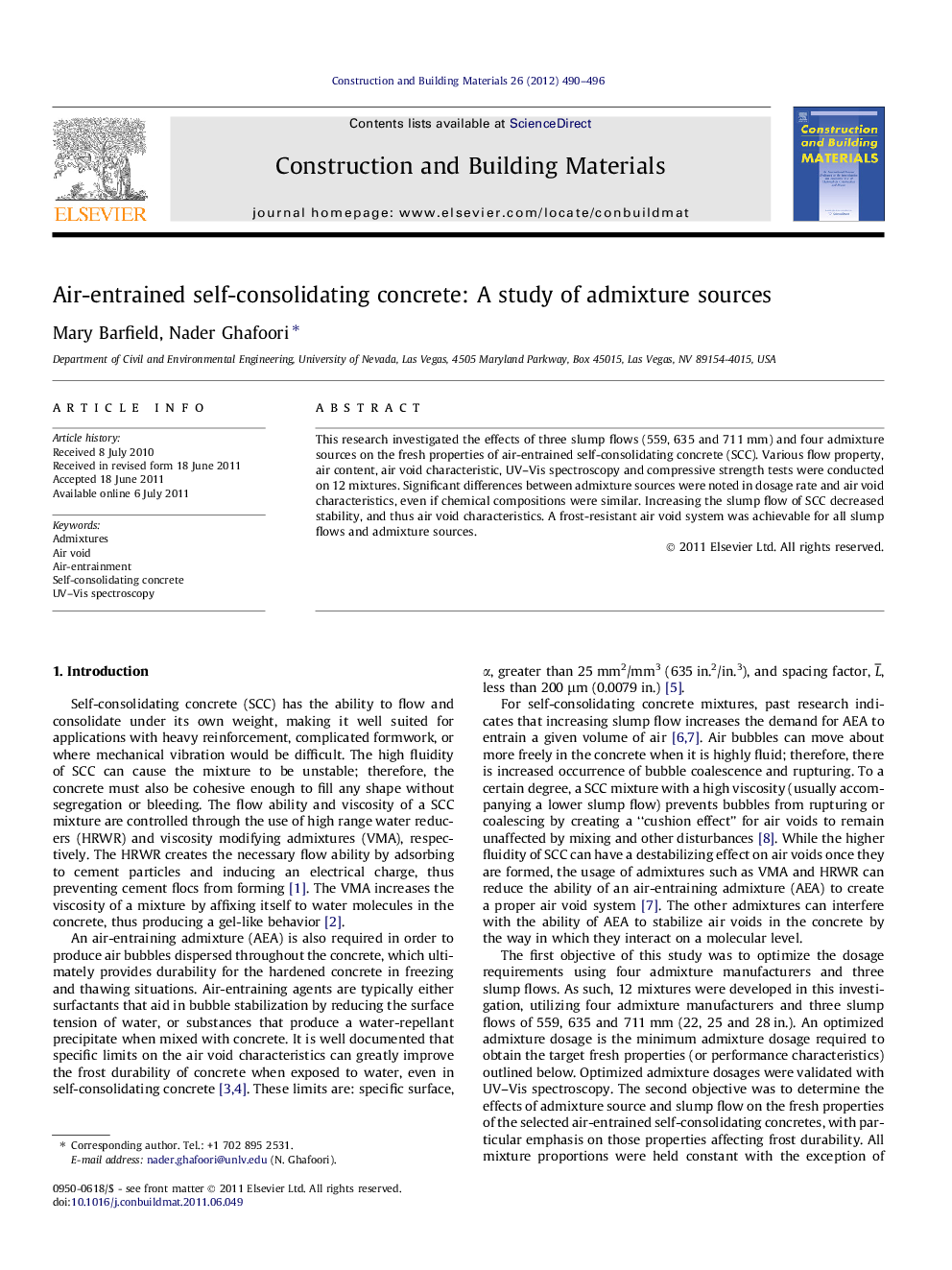| Article ID | Journal | Published Year | Pages | File Type |
|---|---|---|---|---|
| 259180 | Construction and Building Materials | 2012 | 7 Pages |
This research investigated the effects of three slump flows (559, 635 and 711 mm) and four admixture sources on the fresh properties of air-entrained self-consolidating concrete (SCC). Various flow property, air content, air void characteristic, UV–Vis spectroscopy and compressive strength tests were conducted on 12 mixtures. Significant differences between admixture sources were noted in dosage rate and air void characteristics, even if chemical compositions were similar. Increasing the slump flow of SCC decreased stability, and thus air void characteristics. A frost-resistant air void system was achievable for all slump flows and admixture sources.
► Admixtures were tested to produce air-entrained self-consolidating concrete. ► Similar types of admixtures from different sources cannot be used interchangeably. ► Admixture dosage rates of SCC can be confirmed with UV–Vis spectroscopy. ► Increasing slump flow decreases stability and air void characteristics. ► Air void size and spacing are affected by type of AEA, slump flow, use of HRWR and VMA.
